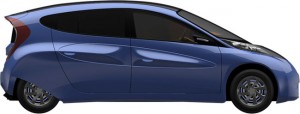The following article comes from Planet Save and is By Britt Mauriss On
You know it as well as I do—the home solar trend is taking off, as concerns about climate change and rising electricity costs point to clean, renewable solar as a solution. And even though residential solar has never been more efficient or affordable, disturbing myths and misinformation still abound.
Here are seven persistent myths about solar energy—and what you can say to combat them.
1. Solar panels are unreliable because they don’t work at night.
No, solar panels can’t generate power in total darkness. But home solar systems frequently generate more energy during daylight hours than a home even needs, when demand is highest. This excess energy can be sent back to the grid, lessening the demand on the power utility for everyone else’s fossil-fueled electricity. Almost all states allow solar homeowners to either sell or get credit for surplus energy.
Your eco friend note: We don’t use much electricity in the evening and night, our solar panels make electricity in the daylight hours when we need additional power.
2. Solar panels are plain unattractive.
The fact that solar panels raise a home’s resale value, rather than lower it, is an indication that most people view residential PV systems as a positive. Even so, solar manufacturers are addressing such concerns with cool modular styles that blend almost seamlessly with your rooftop. Or, better yet, several brands have introduced solar shingles, a solar technology that actually doubles as your rooftop, protecting your home from the elements and generating green, renewable power at the same time.
Your eco friend note: I think they are beautiful, even better looking than a normal rooftop.
3. Residential PV systems are hard to maintain.
Negatory. Home solar systems routinely outlive their 25-year warranties, and it takes an awful lot to overload them. With no moving parts, solar panels are extremely reliable, requiring little more than an occasional cleaning. Snow and ice simply slide off the panels almost as soon as the sun appears.
Your eco friend note: solar panels have no moving parts so it makes sense that there is no maintenance.
4. Solar panels add to global warming.
Any manufacturing process, including those for solar panels, requires energy, transportation, and waste disposal, but solar’s carbon footprint comes to a halt there, while other forms of energy continue to produce harmful carbon emissions year after year. Solar panels do not increase atmospheric temperature. Thermal power plants discharge exponentially more waste heat into the environment. Solar panels earn their emissions back by offsetting emissions from fossil-fuel power plants within a few years.
Your eco friend note: Coal plants, oil, gas, and other utilities contribute much more and continue throughout their lifetime.
5. Solar panels are ineffective in cloudy areas.
The fact that Germany is the world’s largest solar market is proof that solar power can flourish in cold climates. Anyone who has ever gotten sunburned on a cloudy day can attest to the fact that clouds don’t block the sun’s energy. Additionally, the costs for conventional electricity are usually higher in cold-climate areas, making solar power a good option even under the cloudiest skies.
Your eco friend note: my solar panels generate a lot of power in the daylight hours, even when the sun doesn’t shine.
6. Solar panel installations will get cheaper farther down the road.
Currently, some homeowners can save up to 60 percent off the cost of a home solar system by taking advantage of rebate and incentive programs offered at the federal, state, and local level. Although the cost of installing a residential PV system is likely to decrease further in the coming years, in today’s political climate, the continuation of incentive programs is uncertain. With funding being slashed left and right, it’s well worth getting a solar assessment this year.
Your eco friend note: If the governments were to stop subsidising electricity then my panels would seem much much cheaper.
7. Electricity from fossil fuels is more cost-effective than solar.
It’s true that electricity from existing fossil-fuel power plants is currently cheaper than solar energy… in most areas (but not all). Many experts, however, predict financial parity for solar within the next few years. They’ve already reached it in Australia. The Energy Information Agency predicts that global energy demands will rise 53 percent from 2008 to 2035. Conventional energy costs will continue to rise as well, putting unprecedented strain on our electrical grid, and making solar a wise decision for anyone wanting to lock in low rates for the next 25+ years. In fact, if you look at the costs of electricity from a new coal or nuclear plant when it would come on-line, compared to projected costs of solar at that time, solar energy is already cheaper.
Your eco friend note: see my comments above in regards to government subsidies. I also love that my solar panels put electricity directly into my home rather than into a power line. In my city I pay twice the amount of money for electricity and I am paying for …
- Administration Charge
- Delivery Charges
- Distribution Charges
- Balancing Pool Allocation
- DAS Adjustment Rider (who knows what that is??)
- Trans Access Defer Acct Rider
- Transmission Charge
- Local Access Fee
No kidding!! This added up to $101.74 and my electricity use added up to $47.68. Can you see why I want off the grid?
Did I miss anything?
What are some other solar myths you’ve heard, and how do you think we can we counter them? Let me know in the comments.
Rooftop solar panels via Jonsowman
Source: Planetsave (http://s.tt/15q3n)





